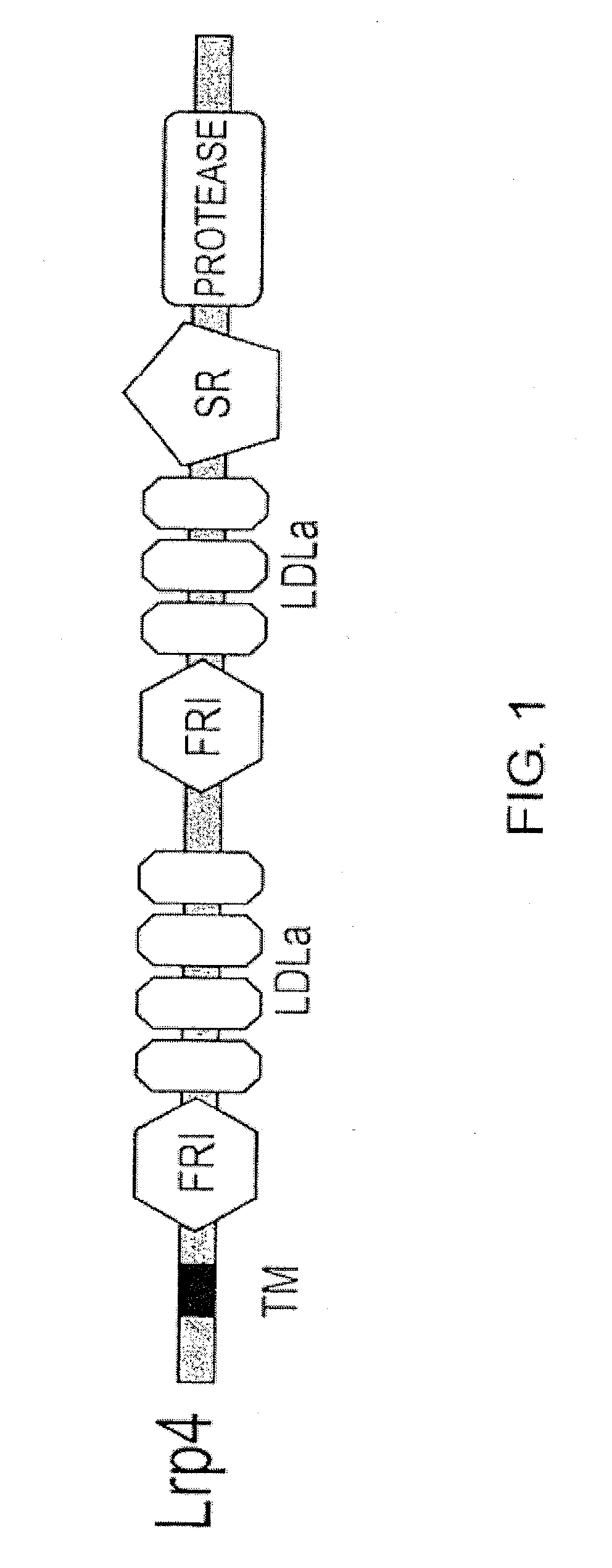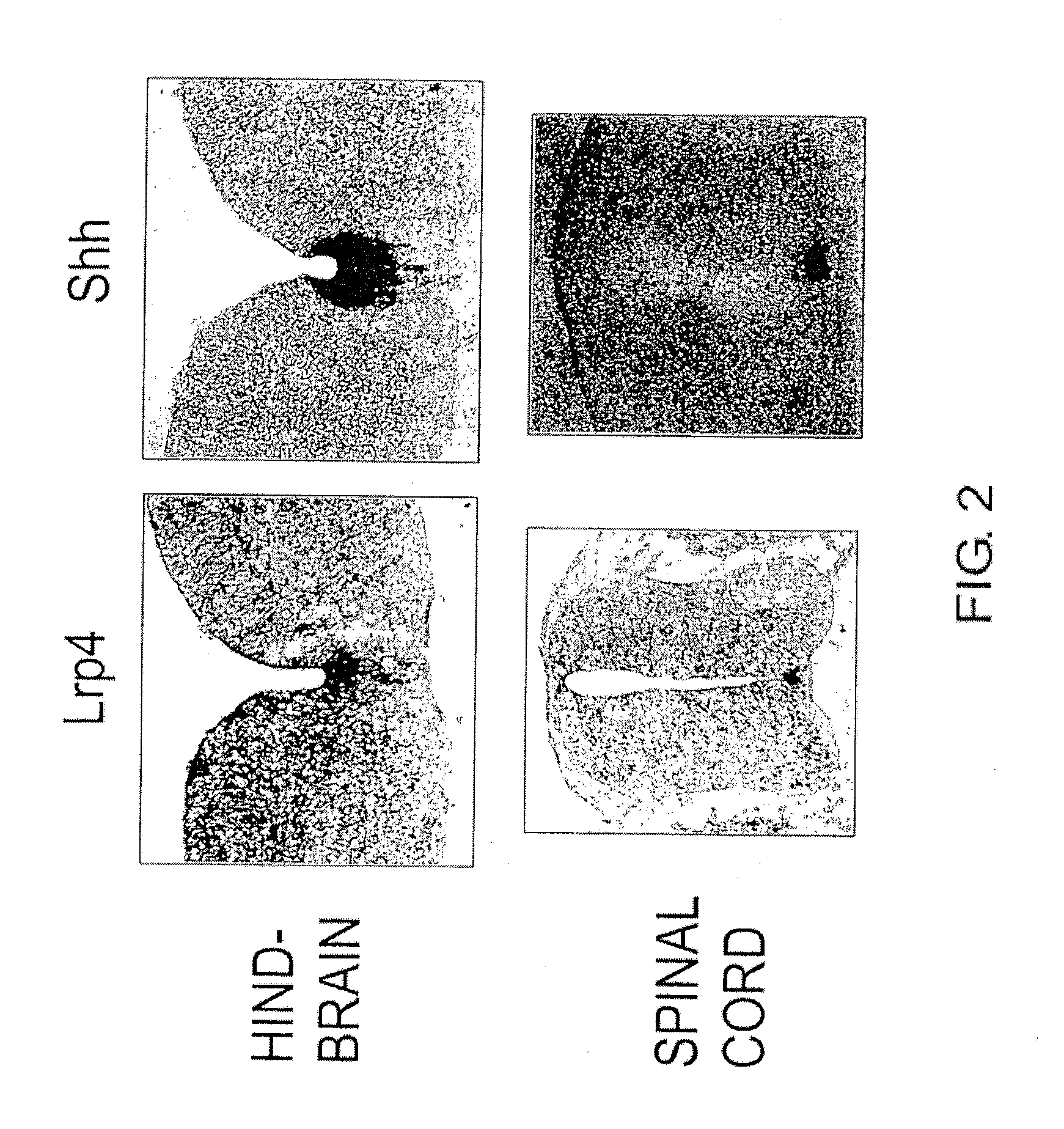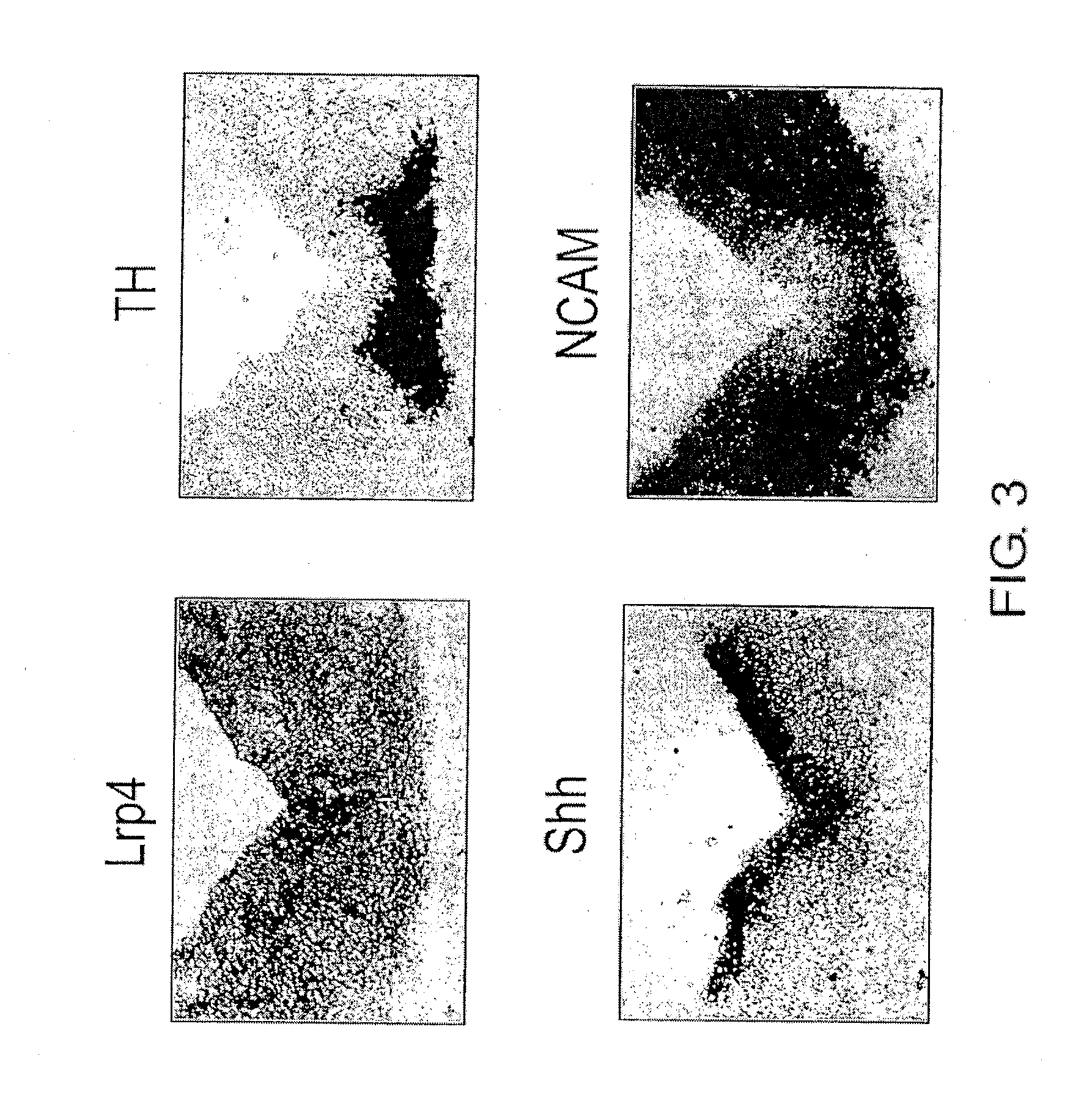Lrp4/CORIN DOPAMINE-PRODUCING NEURON PRECURSOR CELL MARKER
a dopamine-producing neuron and precursor cell technology, applied in the field of polynucleotide probes and antibodies for detecting and selecting can solve the problems of unsatisfactory effect, risk of infection and contamination, method currently being criticized, etc., and achieves long-term therapeutic effects, high degree of safety, and the effect of extremely effective isolating dopaminergic neuron progenitor cells
- Summary
- Abstract
- Description
- Claims
- Application Information
AI Technical Summary
Benefits of technology
Problems solved by technology
Method used
Image
Examples
example 1
Isolation and Sequence Analysis of a Gene Specific to Dopaminergic Neuron Progenitor Cells
[0154]To isolate genes specific to dopaminergic neuron progenitor cells, the midbrain ventral region of E12.5 mice was additionally cut into two regions in the dorsoventral direction, and genes specifically expressed in the most ventral region containing dopaminergic neurons were identified by the subtraction (N-RDA) method. One of the isolated cDNA fragments was a fragment encoding Lrp4 / Corin. Lrp4 encodes type II transmembrane proteins (FIG. 1).
(1) N-RDA Method
(1)-1. Adapter Preparation
[0155]The following oligonucleotides were annealed to each other, and prepared at 100 μM, (ad2: ad2S+ad2A, ad3: ad3S+ad3A, ad4: ad4S+ad4A, ad5: ad5S+ad5A, ad13: ad13S+ad13A)
ad2S:(SEQ ID NO: 5)cagctccacaacctacatcattccgtad2A:(SEQ ID NO: 6)acggaatgatgtad3S:(SEQ ID NO: 7)gtccatcttctctctgagactctggtad3A:(SEQ ID NO: 8)accagagtctcaad4S:(SEQ ID NO: 9)ctgatgggtgtcttctgtgagtgtgtad4A:(SEQ ID NO: 10)acacactcacagad5S:(SEQ ID...
example 2
Expression Analysis of the Lrp4 Gene
[0172]Next, an expression analysis of the Lrp4 gene by in situ hybridization was carried out according to the following protocol.
[0173]First, E12.5 mouse embryos were embedded in O.C.T., and fresh frozen sections of 16 μm thickness were prepared. After drying on a slide glass, the sections were fixed in 4% PFA at room temperature for 30 minutes. After washing with PBS, hybridization was carried out at 65° C. for 40 hours (1 μg / ml DIG-labeled RNA probe, 50% formamide, 5×SSC, 1% SDS, 50 μg / ml yeast RNA, 50 μg / ml Heparin). Subsequently, the sections were washed at 65° C. (50% formamide, 5×SSC, 1% SDS) and then treated with RNase (5 μg / ml RNase) at room temperature for 5 minutes. After washing with 0.2×SSC at 65° C. and washing with 1× TBST at room temperature, blocking was carried out (Blocking reagent: Roche). The sections were then reacted with alkaline phosphatase-labeled anti-DIG antibody (DAKO), washed (1×TBST, 2 mM Levamisole), and color develo...
example 3
Expression of Lrp4 in Dopaminergic Neurons Induced to Differentiate from ES Cells
[0176]Next, whether Lrp4 is expressed in ES cells that have been induced to differentiate into dopaminergic neurons in vitro, was examined.
[0177]First, dopaminergic neurons were induced to differentiate from ES cells using the SDIA method (Kawasaki et al. (2000) Neuron 28(1): 31-40) (see the upper part of FIG. 7). Cells were recovered 4, 6, 8, 10, and 12 days after induction, and total RNA was recovered using the RNeasy Mini Kit (Qiagen) followed by RT-PCR. In RT-PCR, cDNA was initially synthesized for 1 μg of total RNA using the RNA PCR Kit (TaKaRa). PCR was then carried out in the following reaction system, using as a template cDNA equivalent to 10 ng, 1 ng, and 0.1 ng.
10x ExTaq 2 μl2.5 mM dNTP 1.6 μlExTaq 0.1 μl100 μM primer 0.2 μl eachcDNA 1 μlDistilled water14.9 μl
[0178]After incubating for 2 minutes at 94° C., 35 PCR cycles of 30 seconds at 94° C., 30 seconds at 65° C., and 2 minutes at 72° C. w...
PUM
| Property | Measurement | Unit |
|---|---|---|
| temperature | aaaaa | aaaaa |
| temperature | aaaaa | aaaaa |
| temperature | aaaaa | aaaaa |
Abstract
Description
Claims
Application Information
 Login to View More
Login to View More - R&D
- Intellectual Property
- Life Sciences
- Materials
- Tech Scout
- Unparalleled Data Quality
- Higher Quality Content
- 60% Fewer Hallucinations
Browse by: Latest US Patents, China's latest patents, Technical Efficacy Thesaurus, Application Domain, Technology Topic, Popular Technical Reports.
© 2025 PatSnap. All rights reserved.Legal|Privacy policy|Modern Slavery Act Transparency Statement|Sitemap|About US| Contact US: help@patsnap.com



